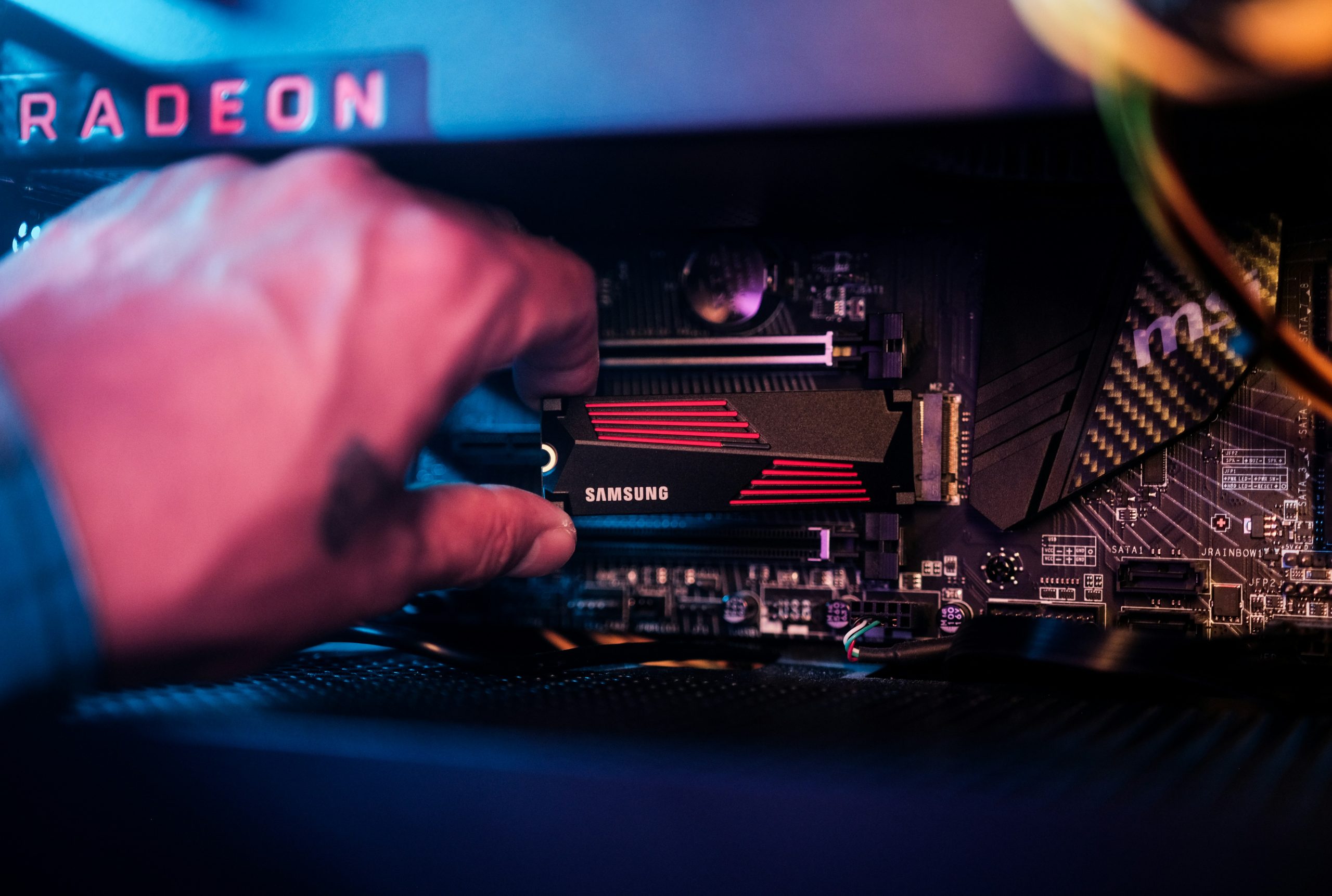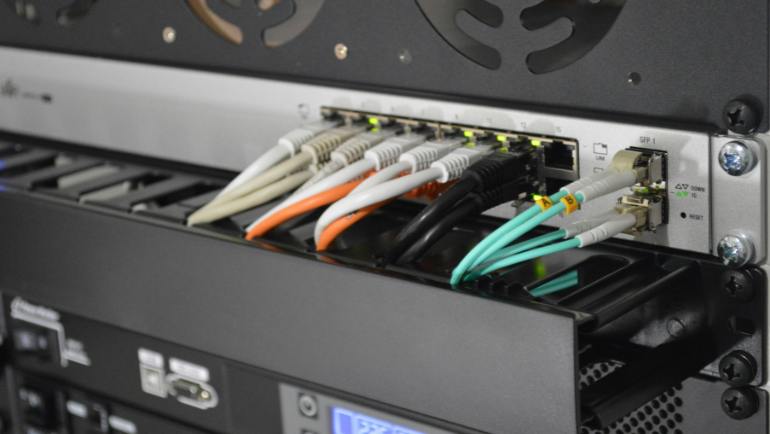
Solid State Drives (SSDs) are one of the most popular storage devices in terms of speed, versatile sizes, and more. Many SSD interface types like NVMe are used in enterprises to increase the performance of their system, boasting the overall system response time and productivity. However, choosing your storage device can be confusing due to the various types of SSD interfaces and their application. Let’s understand the different SSD Interface types in detail to help you understand their working, function, and application in businesses.
Different Types of SSD Interfaces
SSDs lack moving parts unlike Hard Disk Drives (HDDs), making them extremely fast improving system performance, and reducing boot time. However, not all SSDs are the same, many key factors including cell type, workload support, and different SSD interface types must be determined before selecting one. The following section will highlight different solid-state drive interface types in detail.
Non-Volatile Memory Express Solid State Drives – NVMe SSD

In 2011, NVMe storage technology was first introduced as an alternative to SATA and SAS protocols. NVMe Interface is one of the world’s fastest Solid State Drive storage devices. It is a communication protocol designed to work with NAND flash memory chips using the PCIe bus. The storage size of NVMe SSDs ranges from 128 GB to 8 TB for consumer drives, while enterprise-grade NVMe SSDs can reach up to 30 TBs. NVMe’s parallelism feature allows simultaneous data read and write across multiple PCIe lanes.
The drive speed reaches up to 3000 megabytes per second (MB/s), while some newer models can surpass it to 75000 MB/s. NVMe SSD connects to the system motherboard via form factors such as M.2 or U.2 & more. NVMe interface in SSDs has achieved popularity among storage devices due to its high scalability, enhanced security, low latency, and faster data transfer speed. However, it does come with a bigger price tag.
| Features | Pros | Cons |
| Speed | Significantly faster read/write speeds | Frequent use may cause read disturbance |
| Compatibility | Compatible with PCIe interfaces and future-proof Interface | It only connects via M.2 or U.2 slot mostly available on new motherboards |
| Efficiency | Longer lifespan due to less heat and wear | It may have less over-provisioning state than other SSDs. |
| Connectivity | It doesn’t require any cable connection | The motherboard needs to have a dedicated NVMe SSD interface |
| Hot Swapping | Yes | Not all motherboard supports it |
Popular NVMe SSDs for sale
Serial ATA Solid State Drives – SATA SSD

SATA or Serial Advance Interface, has brought massive changes in the storage world since its inception in 2003. All SATA SSDs consist of many types of NAND flash memory cells such as MLC, SLC, QLC, and TLC. Each cell type is designed to be either read or write-intensive, making SSDs suitable for various enterprise-grade applications. A typical SATA SSD from famous NAND flash manufacturers has speeds ranging from 500 MB/s to 6 GB/s.
Today, the SATA interface is used primarily in enterprise PCs and servers for applications such as databases and web servers to improve data transfer speed. Here are some pros and cons of the SATA interface.
| Features | Pros | Cons |
| Speed | Decent data transfer rates (Up to 6 Gbps for SATA III) | Slower compared to newer interfaces like NVMe |
| Compatibility | Widely compatible with most motherboards and drives | Limited by older hardware |
| Cost | Generally more affordable than NVMe | Higher-end NVMe drives offer better performance for price |
| Cable Length | Supports longer cable lengths than some alternatives | Length limitations can still be a concern in some setups |
| Hot Swappable | Supports hot-swapping of drives | Not all motherboards support hot-swapping |
| Power Consumption | Lower power consumption compared to HDDs | Higher power consumption compared to NVMe |
Popular SATA SSDs for Sale
Serial-Attached SCSI Solid-State Drive – SAS SSD

SAS is a newer generation of SCSI technology that leverages serial technology for higher transmission speeds. SAS interface uses a high-density cable with four signal pairs two to carry data and the other two for power. It supports up to 128 direct point-to-point data transmissions between hardware devices offering speeds up to 12 GB/s.
Let’s look into the pros and cons of the SAS SSD interface.
| Features | Pros | Cons |
| Speed | High data transfer rates (up to 12 Gbps) | May not be necessary for all applications |
| Scalability | Supports daisy-chaining for easy scalability | Requires additional hardware |
| Dual Port Capability | Provides redundancy and failover | Can increase the complexity of setup and management |
| Backward Compatibility | Compatible with SATA drives | Limited compatibility with consumer devices |
| Reliability | Built for enterprise environments | Higher cost compared to consumer-grade hardware |
Popular SAS SSDs for Sale
Peripheral Component Interconnect Express Solid-State Drive – PCIe SSD

PCIe SSD storage is an alternative to SAS and SATA SSDs because of faster speeds and better storage capacity. Its storage capacity ranges from 256 GB to 8 TB for consumer drives and 15 TB or more for enterprise SSDs. It is an expansion card that attaches a computer motherboard via x2, x4, x8, x16, and x32 PCIe slot form factors. The “x” refers to the number of lanes each card has for bidirectional data transfer.
Let’s look into the pros and cons of SSDs using a PCIe interface.
| Features | Pros | Cons |
| Speed | High-speed data transfer rates (varies by generation) | Requires compatible PCIe slots |
| Scalability | Supports multiple devices on a single bus | A limited number of available PCIe slot |
| Versatility | Used for various components (e.g., GPUs, SSDs) | Can be expensive to implement for certain applications |
| Bandwidth | Provides high bandwidth for data-intensive tasks | Compatibility issues with older systems |
| Low Latency | Offers low latency for real-time applications | PCIe lane configurations may limit performance |
Popular PCIe SSDs for Sale
Fiber Channel Solid-State Drive – FC SSD

Fiber channel (FC) SSDs are high-performance storage devices that use an FC interface for faster and more reliable data transfer speed. These devices are designed to integrate with SAN NAS, DAS, and other networks easily with capacities from 200 GBs to 16TB. FC SSDs have higher read/write speeds ranging from 2 Gbps to 32 Gbps and higher in some more expensive models.
These SSDs are designed for mission-critical systems like data warehousing or databases to transfer uninterrupted data even in case of hardware failure. Moreover, similar to SAS, NVMe and SATA drives, FC SSD has a feature that allows quick and easy drive replacement without downtime known as hot swapping. Here are the advantages and disadvantages of FC SSDs.
| Features | Pros | Cons |
| Scalability | Easily scalable for growing data needs | Needs specific hardware like FC switches and HBAs |
| Security | Robust security features, including AES encryption | Less suitable for consumer applications |
| Reliability and Availability | Redundancy features and Error Correction Code (ECC) | More complex to configure and manage |
| Performance | High data transfer rates (up to 32 Gbps) | Specialized hardware increases overall costs |
| Connection | Uses a Dedicated fiber channel cable to connect | Not all devices support it |
Popular Fiber Channel SSDs for Sale
Computing Worlds offers a wide range of new, used, and refurbished SSDs for sale at competitive prices. You can also request free bulk quotes for the required SSDs on our website.
Frequently Ask Questions:
What SSD Drive Interfaces to Use for Best Performance?
PCIe, NVMe and SAS SSD interfaces are best for robust performance in enterprise computer systems.
What is the Fastest SSD Drive Interface?
The new PCIe 5.0 is the fastest SSD interface with speeds up to 63.015 GB per second.
What are SSD Drive Interfaces?
An SSD interface is the physical and protocol connection through which a solid-state drive (SSD) communicates with the host system, such as SATA, NVMe, or PCIe.
Storage devices like SSDs are an important part of all businesses and enterprises. They provide essential data storage, without which normal day-to-day operations won’t work. Besides the interface, many different SSD types are available, including Opal 2.0 SED which can encrypt data automatically. Therefore, evaluate your needs and consider all the facts about SSDs to benefit from your investment and extend your SSD lifespan.






